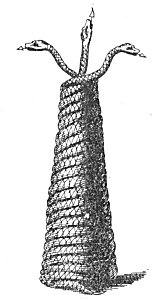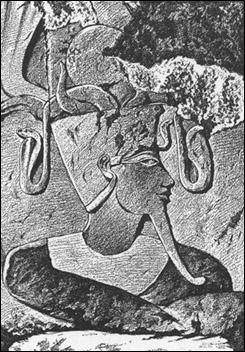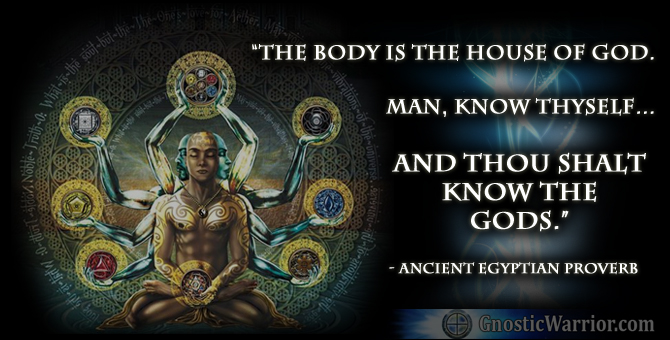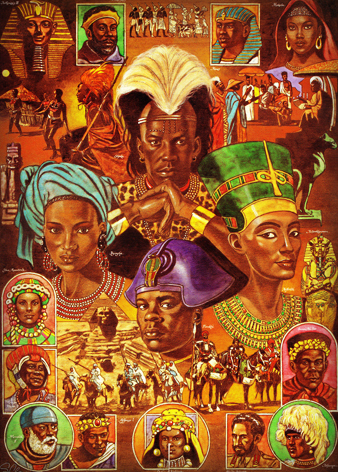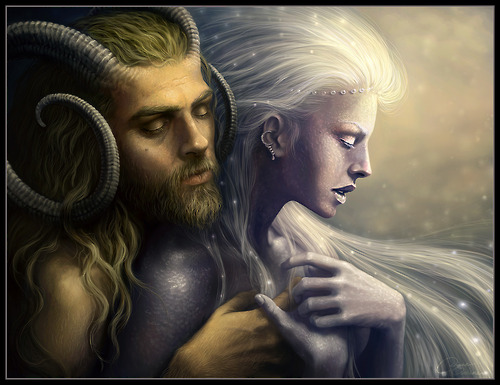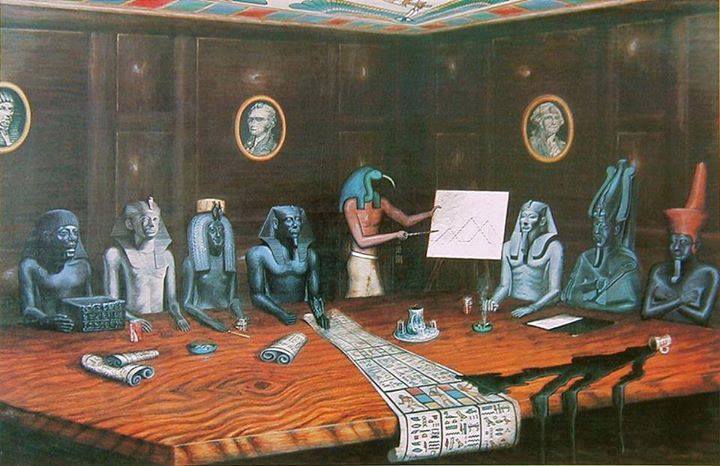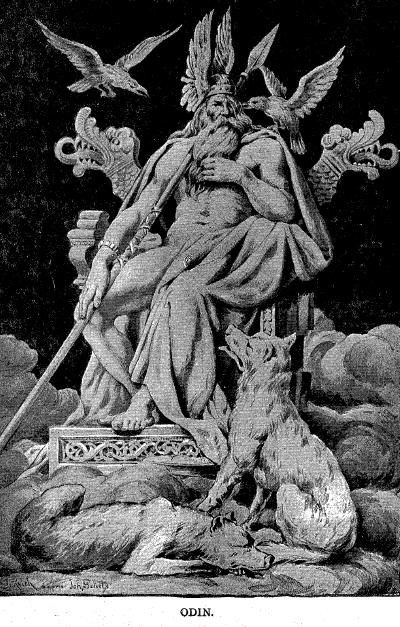While a vast number of deities are associated with the Samothracian Mysteries, the ritualistic drama centers around four brothers. The first three–Aschieros, Achiochersus, and Achiochersa–attack and murder the fourth–Cashmala (or Cadmillus). Dionysidorus, however, identifies Aschieros with Demeter, Achiochersus with Pluto, Achiochersa with Persephone, and Cashmala with Hermes. Alexander Wilder notes that in the Samothracian ritual “Cadmillus is made to include the Theban Serpent-god, Cadmus, the Thoth of Egypt, the Hermes of the Greeks, and the Emeph or Æsculapius of the Alexandrians and Phœnicians. ” Here again is a repetition of the story of Osiris, Bacchus, Adonis, Balder, and Hiram Abiff. The worship of Atys and Cybele was also involved in the Samothracian Mysteries. In the rituals of the Cabiri is to be traced a form of pine-tree worship, for this tree, sacred to Atys, was first trimmed into the form of a cross and then cut down in honor of the murdered god whose body was discovered at its foot.
“If you wish to inspect the orgies of the Corybantes, ” writes Clement, “Then know that, having killed their third brother, they covered the head of the dead body with a purple cloth, crowned it, and carrying it on the point of a spear, buried it under the roots of Olympus. These mysteries are, in short, murders and funerals. [This ante-Nicene Father in his efforts to defame the pagan rites apparently ignores the fact that, like the Cabirian martyr, Jesus Christ was foully betrayed, tortured, and finally murdered!] And the priests Of these rites, who are called kings of the sacred rites by those whose business it is to name them, give additional strangeness to the tragic occurrence, by forbidding parsley with the roots from being placed on the table, for they think that parsley grew from the Corybantic blood that flowed forth; just as the women, in celebrating the Thcsmophoria, abstain from eating the seeds of the pomegranate, which have fallen on the ground, from the idea that pomegranates sprang from the drops of the blood of Dionysus. Those Corybantes also they call Cabiric; and the ceremony itself they announce as the Cabiric mystery.”
The Mysteries of the Cabiri were divided into three degrees, the first of which celebrated the death of Cashmala, at the hands of his three brothers; the second, the discovery of his mutilated body, the parts of which had been found and gathered after much labor; and the third–accompanied by great rejoicing and happiness–his resurrection and the consequent salvation of the world. The temple of the Cabiri at Samothrace contained a number of curious divinities, many of them misshapen creatures representing the elemental powers of Nature, possibly the Bacchic Titans. Children were initiated into the Cabirian cult with the same dignity as adults, and criminals who reached the sanctuary were safe from pursuit. The Samothracian rites were particularly concerned with navigation, the Dioscuri–Castor and Pollux, or the gods of navigation–being among those propitiated by members of that cult. The Argonautic expedition, listening to the advice of Orpheus, stopped at the island of Samothrace for the purpose of having its members initiated into the Cabiric rites.
Herodotus relates that when Cambyses entered the temple of the Cabiri he was unable to restrain his mirth at seeing before him the figure of a man standing upright and, facing the man, the figure of a woman standing on her head. Had Cambyses been acquainted with the principles of divine astronomy, he would have realized that he was then in the presence of the key to universal equilibrium. “‘I ask,’ says Voltaire, ‘who were these Hierophants, these sacred Freemasons, who celebrated their Ancient Mysteries of Samothracia, and whence came they and their gods Cabiri?'” (See Mackey’s Encyclopædia of Freemasonry.) Clement speaks of the Mysteries of the Cabiri as “the sacred Mystery of a brother slain by his brethren,” and the “Cabiric death” was one of the secret symbols of antiquity. Thus the allegory of the Self murdered by the not-self is perpetuated through the religious mysticism of all peoples. The philosophic death and the philosophic resurrection are the Lesser and the Greater Mysteries respectively.
A curious aspect of the dying-god myth is that of the Hanged Man. The most important example of this peculiar conception is found in the Odinic rituals where Odin hangs himself for nine nights from the branches of the World Tree and upon the same occasion also pierces his own side with the sacred spear. As the result of this great sacrifice, Odin, while suspended over the depths of Nifl-heim, discovered by meditation the runes or alphabets by which later the records of his people were preserved. Because of this remarkable experience, Odin is sometimes shown seated on a gallows tree and he became the patron deity of all who died by the noose. Esoterically, the Hanged Man is the human spirit which is suspended from heaven by a single thread. Wisdom, not death, is the reward for this voluntary sacrifice during which the human soul, suspended above the world of illusion, and meditating upon its unreality, is rewarded by the achievement of self-realization.

Moe is the founder of GnosticWarrior.com. He is a father, husband, author, martial arts black belt, and an expert in Gnosticism, the occult, and esotericism.

